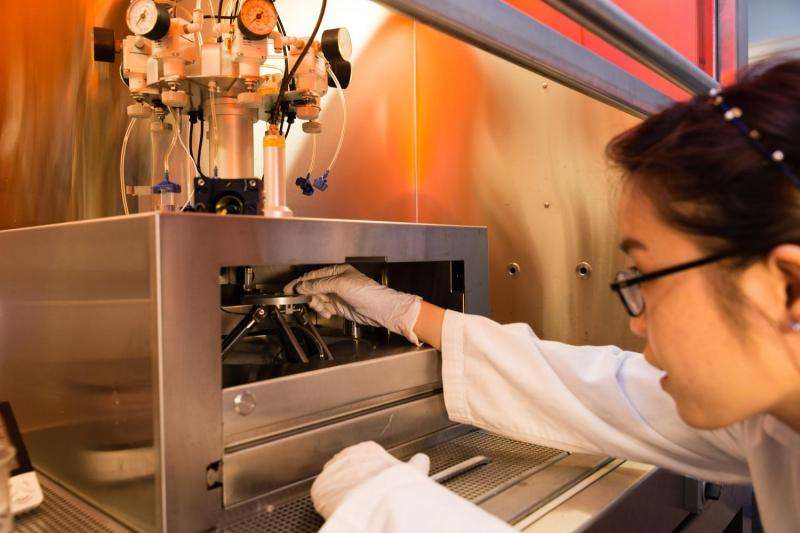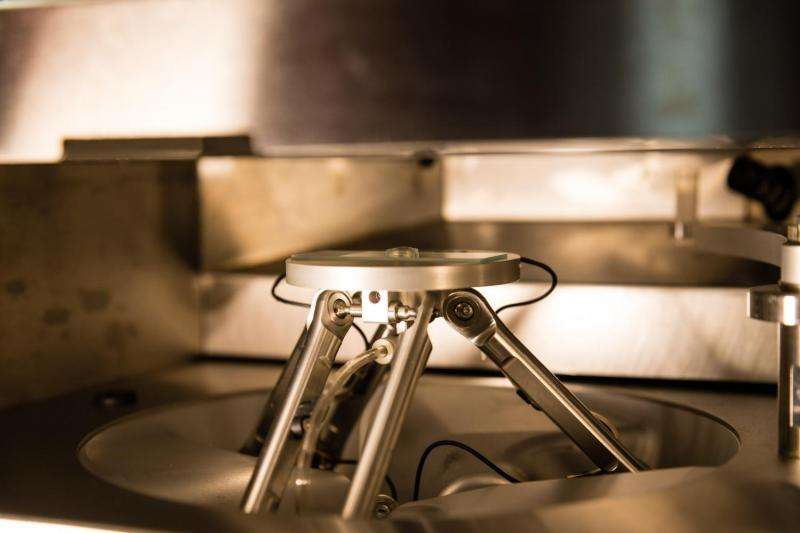3-D printing custom support structures for tissue implants

Tissue implants customised to a patient could soon be printed using a new type of 3-D printer under development by Nanyang Technological University, Singapore (NTU Singapore) and a Singapore-based 3-D printing start-up focused on healthcare.
This new printer can print the supporting structure layer by layer and insert living cells to form a live tissue that could aid in regeneration of particular tissues or organs.
The industry research tie-up is one of the many partnerships made possible by the National Additive Manufacturing Innovation Cluster, also known as NAMIC.
Since the formation of NAMIC by the National Research Foundation (NRF) Singapore and SPRING Singapore last year, the cluster has reached out to about 400 local and international companies to help them adopt additive manufacturing, also known as 3-D-printing, as part of their business.
NAMIC has also successfully established joint funding for 39 joint projects between companies and academic research institutions and has 80 more projects in the pipeline.
NTU's innovation and enterprise company NTUitive is leading NAMIC, in partnership with SPRING Singapore and the Singapore Economic Development Board. The cluster's three founding members are Nanyang Technological University (NTU), National University of Singapore (NUS) and the Singapore University of Technology and Design (SUTD).
Permanent Secretary for the Ministry of Trade and Industry, Mr Loh Khum Yean, today launched NAMIC, kicking off as well the cluster's inaugural Additive Manufacturing Summit at The Pan Pacific Singapore.
NRF Singapore's Chief Executive Officer Professor Low Teck Seng, said, "Singapore continues to support knowledge creation and value capture through science & technology. Facilitating industry growth through technology is key to developing our economy. We can accelerate this through mission-oriented innovation clusters that strengthen partnerships across companies, universities, research institutes and government agencies. Within this context, additive manufacturing has been identified as a key capability we would like to build through innovation clusters to forge a new technological edge for Singapore's manufacturing sector."
NAMIC's Managing Director, Dr Ho Chaw Sing, said the response they had received from companies has been positive, despite the use of 3-D printing for industrial uses still being in its infancy.
"While 3-D printing has taken off for customised products in the aerospace and biomedical industries, many local companies still find the barrier of entry quite high, due to the costly printers and a lack of expertise in additive manufacturing," Dr Ho explained.
"Our objectives are to reach, educate and help link these companies to scientists and engineers at research institutes, who already have existing 3-D-printing machines and the technical know-how. This way, we ensure that the innovative solutions developed through research will meet real business needs."
SPRING Singapore's Director for Manufacturing and Engineering, John Lu, said, "SPRING will continue to work closely with NAMIC to accelerate the adoption of Additive Manufacturing among SMEs and start-ups to grow their business and maintain their competitiveness, and will support enterprises in doing so. There are current as well as emerging opportunities for our local enterprises to develop products and proprietary processes in the area of Additive Manufacturing and we would encourage enterprises to capitalise on them."

Disruptive innovations for manufacturing
A good example of meeting industry needs is the partnership between NTU's Singapore Centre for 3-D Printing and global inventions company Intellectual Ventures (IV), to develop a foolproof approach to authenticate 3-D printed products.
With support from NAMIC and IV's Invention Science Fund, NTU scientists have developed a unique identifier coding that can be embedded during the 3-D-printing process, similar to how authentic products have unique barcodes.
Demonstrated on 3-D printed stainless steel prototypes, this Embedded Identifier Module (EIM) is impossible to remove or alter, and can be easily read by commercially available scanners and readers.
This technology has the potential to help safeguard product authenticity for companies and help tackle issues relating to counterfeiting as the market adopts on-demand manufacturing through the digital supply chain.
Another ongoing partnership facilitated by NAMIC is between SUTD and Gilmour Space Technologies, where researchers are developing a 3-D-printer to print prototype solid fuel mixtures for rockets.
Known as hybrid rocket fuel technology, the solid fuel is made up of two or more fuels comprising wax and plastics, and is designed and printed in a way that provides the rocket its desired thrust in a more cost-effective fashion.
Local company, IDI laser, is developing an in-process monitoring system for a type of 3-D printing known as selective laser melting with help from NUS and support by NAMIC.
When completed, the monitoring system can help to diagnose internal defects during the printing process, thus reducing wastage of printing time, raw materials and energy.
These joint research partnerships are among the industry and technology projects currently under NAMIC's portfolio.
The manufacturing sector accounts for about 20 per cent of Singapore's Gross Domestic Product (GDP) and with continuous technology upgrades and restructuring, the sector will continue to be a key driver in Singapore's future economic growth.
NAMIC was formed to harness, strengthen and expand on Singapore's existing Additive Manufacturing capabilities as an integrated hub and to position the nation as a world leader in applying this technology.
Over the next four years, NAMIC aims to reach out to over 1,000 companies through tailored engagements, industry events and customised workshops to help them improve and innovate through the use of 3-D printing technologies.
Provided by Nanyang Technological University




















